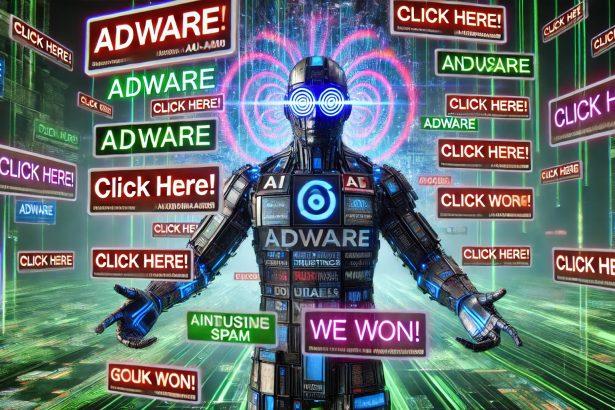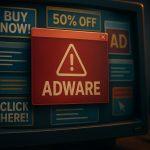Knuckledd.com Adware – Threat Summary
| Threat Type | Adware / Browser-based pop-up redirector |
|---|---|
| Detection Names | Adware.Knuckledd, BrowserModifier:Win32/Knuckledd, PUP.Optional.Knuckledd |
| Symptoms | Constant pop-ups, browser redirects, fake system alerts, slow browser performance |
| Damage & Distribution | Redirects to suspicious pages, installs via software bundles or rogue sites |
| Danger Level | Medium – Annoying and potentially risky if malicious pages are loaded |
| SpyHunter Link | SpyHunter Removal Tool → |
How Knuckledd.com Affects Your Browser
Knuckledd.com is a browser-based adware platform that hijacks your browsing session and floods it with pop-up ads, fake virus alerts, and redirects to shady websites. Once this adware infiltrates your system, it starts manipulating your browser’s behavior—redirecting you to Knuckledd.com or similar domains that push scareware, tech support scams, or even dangerous downloads.
You might notice frequent interruptions while browsing, particularly when opening new tabs or clicking anywhere on a page. These pop-ups often claim your PC is infected, urging you to download something “urgent” or contact “Microsoft support”—classic scare tactics.
Chrome, Firefox, and Edge are all equally vulnerable to this type of browser hijacking, especially if browser extensions or settings have been tampered with.
Where Knuckledd.com Comes From
Knuckledd.com doesn’t install like traditional software—it sneaks in through the backdoor. Most users unknowingly allow it during the installation of free programs, browser extensions, or fake Flash Player/Java updates from shady websites.
Here’s how it usually spreads:
- Bundled inside freeware or shareware installers from unofficial download sites.
- Triggered by malicious ads or fake update prompts on sketchy streaming or torrent pages.
- Dropped by rogue browser extensions disguised as shopping tools, coupon finders, or “search enhancers.”
Once active, it changes your browser’s behavior without clearly asking for permission. In some cases, it uses push notification abuse—convincing you to click “Allow” on a fake CAPTCHA or download prompt to enable continuous ad delivery.
Is Knuckledd.com a Real Threat?
While Knuckledd.com isn’t technically a virus, it’s not harmless either. Its behavior can lead to:
- Exposure to phishing websites and tech support scams.
- Inadvertent download of actual malware.
- System slowdowns due to excessive resource usage by injected scripts.
The longer it stays active, the more damage it can cause—either by redirecting you to malicious sites or by tricking you into installing something far worse.
It’s especially problematic for less tech-savvy users who might fall for its social engineering tricks. Removing it ASAP prevents further adware infections or worse.
Manual Adware Removal Process (Windows & Mac)
Step 1: Identify and Uninstall Suspicious Applications
For Windows Users
- Open Task Manager by pressing
Ctrl + Shift + Esc. - Navigate to the “Processes” tab and search for unknown or high-resource-consuming processes.
- If you detect anything suspicious, right-click and select “End Task.”
- Go to
Control Panel>Programs>Programs and Features. - Locate and uninstall any unfamiliar programs.
For Mac Users
- Open
Finderand click onApplications. - Identify and move any suspicious applications to the
Trash. - Empty the
Trash. - Check
System Preferences>Users & Groups>Login Itemsfor unknown startup programs and remove them.
Step 2: Remove Malicious Browser Extensions
Google Chrome
- Open Chrome, click
Menu(three dots) >Extensions. - Locate and remove unknown extensions.
- Reset Chrome:
Settings>Reset settings> “Restore settings to their original defaults.”
Mozilla Firefox
- Click
Menu>Add-ons and themes. - Remove suspicious extensions.
- Reset Firefox:
Help>More troubleshooting information> “Refresh Firefox.”
Safari (Mac)
- Open Safari, go to
Preferences>Extensions. - Delete unknown extensions.
- Reset Safari:
History> “Clear History.”
Microsoft Edge
- Click
Menu>Extensions. - Remove any unfamiliar extensions.
- Reset Edge:
Settings>Reset settings> “Restore settings to their default values.”
Step 3: Delete Adware-Associated Files and Folders
For Windows Users
- Press
Win + R, type%AppData%, and press Enter. - Locate and delete suspicious folders.
- Repeat for
%LocalAppData%,%ProgramData%, and%Temp%.
For Mac Users
- Open Finder and press
Shift + Command + G, then enter~/Library/Application Support/. - Remove any suspicious folders.
- Repeat for
~/Library/LaunchAgents/,~/Library/LaunchDaemons/, and~/Library/Preferences/.
Step 4: Flush DNS Cache to Remove Adware Traces
For Windows Users
- Open
Command Promptas Administrator. - Type
ipconfig /flushdnsand press Enter.
For Mac Users
- Open
Terminal. - Enter
sudo killall -HUP mDNSResponderand press Enter.
Step 5: Restart Your System
Perform a reboot to apply the changes and ensure the removal process is complete.
Automatic Adware Removal Using SpyHunter (Windows & Mac)
For an effortless and effective solution, use SpyHunter, a powerful anti-malware tool designed to detect and remove adware completely.
Step 1: Download SpyHunter
Click the link to download SpyHunter: Download SpyHunter Here.
Step 2: Install SpyHunter
Follow the installation guide based on your operating system:
For Windows Users
- Run the downloaded
.exefile. - Follow the installation instructions.
- Launch SpyHunter and allow it to update its malware database.
For Mac Users
- Open the downloaded
.dmgfile. - Drag and drop SpyHunter into
Applications. - Open SpyHunter and let it update its database.
Step 3: Scan and Remove Adware
- Open SpyHunter.
- Click
Start Scan. - Wait for the scan to complete.
- Click
Fix Threatsto remove detected malware.
Step 4: Restart Your Computer
After SpyHunter removes all threats, restart your system to ensure all adware components are fully removed.
Conclusion
If your browser keeps redirecting to Knuckledd.com, it’s time to act. This adware thrives on stealth and confusion, but with the right tools, it can be removed completely. Start by scanning your system with a trusted malware removal tool, reset your browser settings, and revoke any suspicious site notification permissions.




